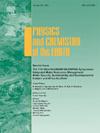珠江三角洲生态系统服务功能的影响因子在空间上存在差异
IF 4.1
3区 地球科学
Q2 GEOSCIENCES, MULTIDISCIPLINARY
引用次数: 0
摘要
生态系统服务(ESs)由于人类和自然干预而发生了重大变化,特别是在城市特大区域内。大量的研究探讨了网络环境的时空动态及其驱动因素。然而,这些研究大多集中在因素对生态环境的负面影响上,而对自然因素和人为因素的积极贡献关注较少。为了填补这一空白,本研究利用珠江三角洲的时空动态对生态环境进行了量化,并进一步探讨了社会驱动因素和自然驱动因素的影响及其空间变化规律。结果表明,土壤的粮食产量(FP)和固碳产氧量(COSP)分别下降了35.54%和11.62%,而保水能力(WR)和土壤保持能力(SC)分别增加了11.07%和28.86%。高度发达中心城市环境质量变化主要受国内生产总值(GDP)和人口(POP)的影响。而珠三角周边地区发展密度相对较低的中小企业则主要受自然因素影响。值得注意的是,虽然人类活动在某些地区造成生态环境损失,但也有地区的GDP和POP对生态环境有正面影响。这些结果强调了基于地点的策略对于减轻对ESs的不利影响的重要性。本文章由计算机程序翻译,如有差异,请以英文原文为准。
Factors affecting ecosystem services varied in space in Pearl River Delta, China
Ecosystem services (ESs) have undergone substantial changes as a result of human and natural interventions, particularly within urban megaregions. A multitude of studies have investigated the spatial-temporal dynamics of ESs and their driving factors. However, these researches have largely focused on the negative impacts of factors on ESs, with less attention given to the positive contributions of both natural and human factors. To fill this gap, this study quantified ESs with the spatial-temporal dynamics in the Pearl River Delta (PRD) and further explored the impacts of social and natural drivers and how such impacts varied in space. The result showed a 35.54 % and 11.62 % decrease in food production (FP) and carbon sequestration and oxygen production (COSP), respectively, but an 11.07 % and 28.86 % increase in water retention (WR) and soil conservation (SC). The changes in ESs in highly developed central cities are mainly affected by gross domestic production (GDP) and population (POP). In contrast, the ESs in the periphery of the PRD with relatively low development density were mainly affected by natural factors. It is worth noting that while human activities caused the loss of ESs in some regions, there are regions where GDP and POP had positive impacts on ESs. These results underscore the importance of place-based strategies to mitigate the adverse impacts on ESs.
求助全文
通过发布文献求助,成功后即可免费获取论文全文。
去求助
来源期刊

Physics and Chemistry of the Earth
地学-地球科学综合
CiteScore
5.40
自引率
2.70%
发文量
176
审稿时长
31.6 weeks
期刊介绍:
Physics and Chemistry of the Earth is an international interdisciplinary journal for the rapid publication of collections of refereed communications in separate thematic issues, either stemming from scientific meetings, or, especially compiled for the occasion. There is no restriction on the length of articles published in the journal. Physics and Chemistry of the Earth incorporates the separate Parts A, B and C which existed until the end of 2001.
Please note: the Editors are unable to consider submissions that are not invited or linked to a thematic issue. Please do not submit unsolicited papers.
The journal covers the following subject areas:
-Solid Earth and Geodesy:
(geology, geochemistry, tectonophysics, seismology, volcanology, palaeomagnetism and rock magnetism, electromagnetism and potential fields, marine and environmental geosciences as well as geodesy).
-Hydrology, Oceans and Atmosphere:
(hydrology and water resources research, engineering and management, oceanography and oceanic chemistry, shelf, sea, lake and river sciences, meteorology and atmospheric sciences incl. chemistry as well as climatology and glaciology).
-Solar-Terrestrial and Planetary Science:
(solar, heliospheric and solar-planetary sciences, geology, geophysics and atmospheric sciences of planets, satellites and small bodies as well as cosmochemistry and exobiology).
 求助内容:
求助内容: 应助结果提醒方式:
应助结果提醒方式:


